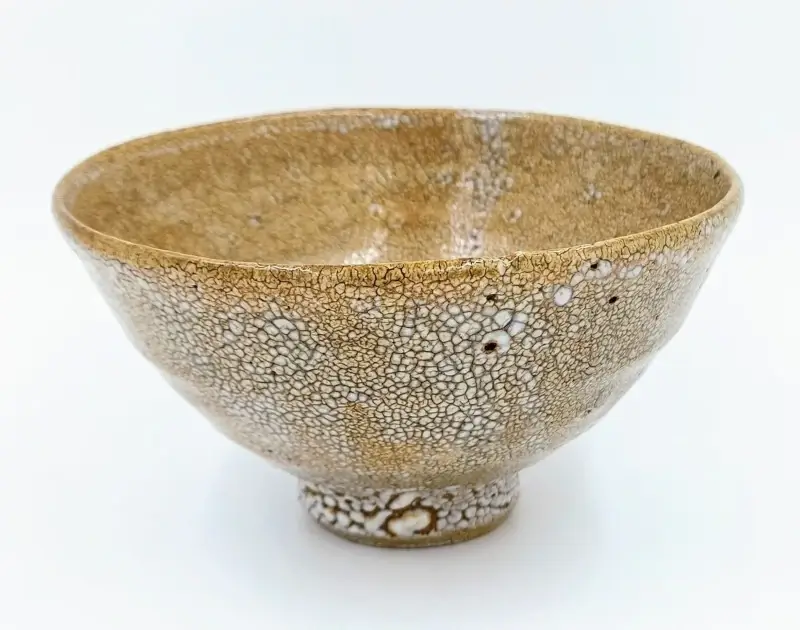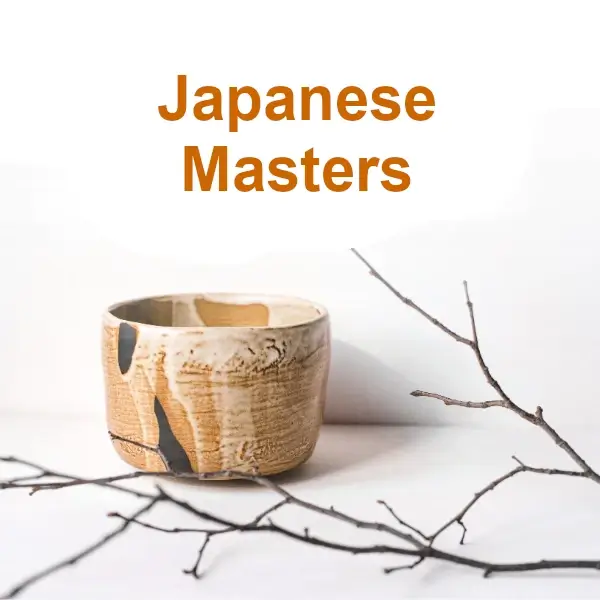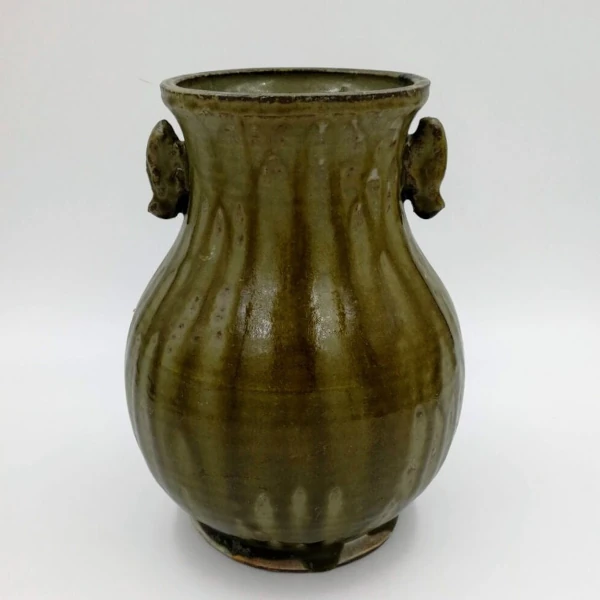The charms of Chawan: the jewel of the tea ceremony

Chawan bowls are essential elements in the Japanese tea ceremony. There are different types, handmade from various materials, although ceramic is ideal. Matcha tea accessories and sets complement this traditional experience.
These bowls are part of the Japanese culture, reaching great artistic value.
Find out what you need to choose the right bowl and find purchasing options in this comprehensive article.
Types of Chawan
Chawan bowls, used in the tea ceremony, come in a wide variety of styles and designs, each with unique characteristics. Here are some of the main types of Chawan bowls:
- Raku Chawan: These bowls are known for their delicacy and beauty. They use a special firing technique, called Raku, which is itself a type of Japanese pottery that is applied to a lot of pieces. They stand out for their irregular textures, effects and crackle effects in the glaze.
- Hagi Chawan: Originating from the Japanese city of Hagi, these bowls are famous for their thick glaze and rustic appearance. Hagi pottery is characterized by its warmth and serenity, reflecting the wabi-sabi aesthetic.
- Karatsu Chawan: From the city of Karatsu, these bowls stand out for their ash glaze, which produces a smooth and elegant surface. They are appreciated for their simplicity and naturalness.
- Shino Chawan: Characterized by their smooth white glaze, Shino bowls are considered works of art. Their beauty lies in the combination of their elegant shape and the subtlety of the glaze.
- Tenmoku Chawan: Originating from the Song dynasty in China, Tenmoku bowls are famous for their black enamel with iron flecks and their rounded shape. They convey a sense of calm and serenity.

This piece and the cover piece are the work of Stoneware Treasury
These are just a few examples of the many types of bowls that exist. Each has its own history and meaning, and suits different tastes and aesthetic preferences.
Elaboration and materials of the Chawan bowls
Chawan bowls are true works of art that require careful craftsmanship. Traditionally, they are handmade by expert Japanese artisans, who use ancestral techniques passed down from generation to generation. This artisanal process ensures that each piece is unique and of exceptional quality.
Different materials are used for the elaboration of the bowls, which provide special characteristics to each piece. Among the most common materials are:
- Ceramics: Ceramics is one of the most widely used materials in the manufacture of Chawan. There are different ceramic techniques, such as porcelain, stoneware or terracotta, each with its own particularities and beauty.
- Urushi lacquer: Urushi lacquer is a traditional and exclusive resin from Japan, extracted from the lacquer tree. It is known for its durability and smooth, glossy finish. Artisans apply layers of urushi lacquer on the bowl, creating elegant and resistant designs. This material was also used in the famous Japanese Kintsugi technique.
- Wood: Some Chawan are made of wood, especially those used in the outdoor tea ceremony. These bowls feature a rustic style and warm texture that makes them unique.
- Stone: Stone Chawans are prized for their strength and natural beauty. The stone used in their manufacture can vary, including granite, slate or stone clay, each with its own texture and color.

From Treasures of Old Times.
Regardless of the material used, artisans strive to highlight the intrinsic beauty of each piece, adding artistic and natural details through glazes, patinas and decorative techniques. In addition, they often use shapes and designs that reflect harmony with nature, evoking the essence of the Japanese tea ceremony.
Matcha tea accessories and sets
To complement the experience of enjoying Matcha tea in an authentic Chawan, there are various accessories and sets that you can purchase. These items add a special and complete touch to the Japanese tea ceremony.
Bamboo whisk (chasen): This is a traditional utensil used to whisk Matcha tea in hot water. It is made with fine bamboo bristles that make it possible to obtain a soft and delicate foam on the surface of the tea.
Matcha measuring spoon (chashaku): This is a bamboo spoon specially designed to measure the exact amount of Matcha tea needed for each preparation. Its curved shape allows for precise scooping and dosing of this fine and aromatic tea spray.
3. Support for chasen (naoshi): This ceramic or bamboo support has a cylindrical shape and is designed to keep the bamboo whisk (chasen) in perfect condition between uses. Besides allowing its correct drying and conservation, it is also a decorative element in itself.

CurationCoMatcha work.
4. Matcha strainer (furui): Used to sieve Matcha tea to ensure that there are no lumps in the powder. This fine mesh strainer ensures a smooth and uniform preparation of the tea, improving its texture and taste.
5. Tea ceremony instruction book: If you wish to delve deeper into the art and practice of the tea ceremony, there are several books that will introduce you to its rituals, techniques and cultural significance. These books can be a valuable guide to learn and appreciate even more this millenary tradition.
In addition, you can also find Matcha tea sets that include several of these accessories, ideal for those who want to have everything ready to enjoy an authentic tea ceremony without worrying about purchasing each item separately.
Japanese culture and tea ceremony
Japanese culture is closely linked to the tea ceremony. This ceremony, known as ‘chanoyu’ or ‘sado’, is a traditional Japanese practice that dates back to the 9th century and has deep roots in aesthetics, spirituality and Zen philosophy.
In the tea ceremony, the Chawan bowl plays a central role. This carefully handcrafted ceramic bowl symbolizes harmony, simplicity and beauty in Japanese culture. Its shape and design are carefully thought out to enhance the tea drinking experience.
The tea ceremony involves a ritualized and meditative process, in which Matcha tea is prepared and served at the Chawan. The movements are precise and attention is focused on every detail, from the way the bowl is held to the way the tea is drunk. This practice seeks to create a space of calm and serenity, where one can fully enjoy the present moment.
In addition to the Chawan bowl, other important elements in the tea ceremony include the Chashaku (bamboo ladle) used to measure the amount of Matcha tea, the Chasen (bamboo whisk) used to mix the tea, and the Hishaku (wooden ladle) used to pour hot water into the bowl.

This ceremony transcends the mere preparation and consumption of tea, becoming a unique artistic and cultural expression. Through the tea ceremony, simplicity, mindfulness and connection with nature and oneself are valued.
In Japanese culture, the Chawan is also considered an art form in its own right. The different styles of bowls, such as Raku, Hagi, Shino or Oribe, reflect the diversity of Japanese ceramics and the talent of the craftsmen who make them. Each Chawan is unique, with its own peculiarities and beauty.
The tea ceremony and the use of Chawan are an integral part of Japanese culture, passed down from generation to generation. Through this ritual, ancestral traditions are honored and the beauty of the simple and the everyday is celebrated.
Care and washing of the Chawan
Chawan bowls are delicate pieces and require proper care to maintain their beauty and durability over time. Here are some recommendations for the care and washing of your bowls:
- Gentle cleaning: To clean them, it is important to use gentle techniques and avoid using abrasive products. Hand wash the bowl with warm water and a mild detergent, making sure not to scrub too hard to avoid damaging the surface.
- Avoid the dishwasher: Although it may be tempting to use the dishwasher to save time, it is preferable to wash Chawan by hand. The intense cycles of a dishwasher can damage the ceramic or glaze of the bowl.
- Careful drying: After washing, dry them carefully with a soft, absorbent cloth. Be sure to remove any excess moisture to avoid the formation of stains or mildew.
- Proper storage: To keep your pieces in optimal conditions, it is advisable to store them in a cool and dry place. Avoid direct exposure to sunlight or sudden changes in temperature.
- Protection during transport: If you need to transport your Chawan, be sure to wrap it carefully in padded material or use a protective case to avoid shocks or impacts that may result in damage.
By following these guidelines, you will be able to enjoy your Chawan bowls for a long time, preserving their beauty and appreciating their cultural significance in the tea ceremony. Remember that each Chawan is unique and deserves to be treated with care and respect, so enjoy your tea experience and the art of Chawan!
Purchase options
If you are interested in acquiring an authentic Chawan, there are several options available in the market. Here are some alternatives for you to find the option that best suits your needs and tastes:
- Specialty stores: Visit tea stores or Japanese specialty stores where you can find a wide selection of Chawan in different styles and materials. You will be able to see them in person and choose the one that catches your eye.
- Online stores: If you prefer the convenience of shopping from home, there is a wide variety of stores that offer a wide range of Chawan options. You can explore different brands, styles and prices with just a few clicks, accessing the work of different artisans who work the clay in a unique way and create pieces of great beauty. You can see more here
- Auctions and antique markets: If you are looking for a Chawan with a special touch or historical value, consider exploring auctions or antique markets. Here you can find unique pieces with a fascinating history.
It is important to keep in mind that the prices of the bowls may vary depending on the material, size and prestige of the artisan who has made it. Therefore, we recommend you to establish a budget and compare different options before making your purchase.
Remember that the Chawan is just the beginning of your tea ceremony experience. If you want to enjoy the full experience, we suggest you consider purchasing a Matcha tea set that includes a Chasen (tea whisk), a Chashaku (tea ladle) and a can of quality Matcha tea. These sets are usually available at specialty stores and online retailers.
Don’t miss the opportunity to immerse yourself in Japanese culture and enjoy the serenity and ritual of the tea ceremony with your own Chawan. Explore the different options, choose the one you like the most and start enjoying this unique experience.

Buy handmade Chawan bowls
Fortunately, there are ceramists who make pieces preserving the ancient techniques of traditional Japanese ceramics.
You can see his work here.
We hope you liked this post. It will help us if you share it on social networks 👍
Note: This article contains links that lead to the artists’ stores on other non-Ceramicartis sales sites. If you make a purchase there, we will receive a small commission that will help us continue the site and in turn continue to support their work. This does not increase the selling price of the artist.
Related posts:


